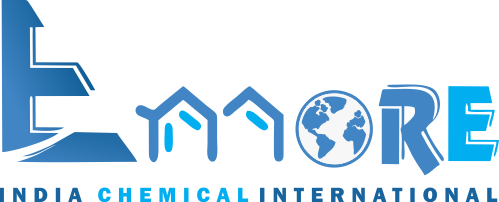Trichloroethylene | TCE| trichlor|Trike| Tricky |supplier Distributor Manufacturer in chennai Taminadu india
The chemical compound trichloroethylene is a halocarbon commonly used as an industrial solvent. It is a clear non-flammable liquid with a sweet smell. It should not be confused with the similar 1,1,1-trichloroethane, which is commonly known as chlorothene.
The IUPAC name is trichloroethene. Industrial abbreviations include TCE, trichlor, Trike, Tricky and tri. It has been sold under a variety of trade names. Under the trade names Trimar and Trilene, trichloroethylene was used as a volatile anesthetic and as an inhaled obstetrical analgesic in millions of patients.
Groundwater and drinking water contamination from industrial discharge is a major concern for human health and has precipitated numerous incidents and lawsuits.
Uses
Trichloroethylene is an effective solvent for a variety of organic materials.
When it was first widely produced in the 1920s, trichloroethylene's major use was to extract vegetable oils from plant materials such as soy, coconut, and palm. Other uses in the food industry included coffee decaffeination and the preparation of flavoring extracts from hops and spices. It has also been used for removing residual water in the production of 100% ethanol.
From the 1930s through the 1970s, both in Europe and in North America, trichloroethylene was used as a volatile anesthetic almost invariably administered with nitrous oxide. Marketed in the UK by ICI under the trade name Trilene it was coloured blue (with a dye called waxoline blue) to avoid confusion with the similar smelling chloroform. TCE replaced earlier anesthetics chloroform and ether in the 1940s, but was itself replaced in the 1960s in developed countries with the introduction of halothane, which allowed much faster induction and recovery times and was considerably easier to administer. Trilene was also used as a potent inhaled analgesic, mainly during childbirth. It was used with halothane in the Tri-service field anaesthetic apparatus used by the UK armed forces under field conditions. As of 2000, however, TCE was still in use as an anesthetic in Africa.
It has also been used as a dry cleaning solvent, although replaced in the 1950s by tetrachloroethylene (also known as perchloroethylene), except for spot cleaning where it was used until the year 2000.
Trichloroethylene was marketed as 'Ecco 1500 Anti-Static Film Cleaner and Conditioner' until 2009, for use in automatic movie film cleaning machines, and for manual cleaning with lint-free wipes.
Perhaps the greatest use of TCE has been as a degreaser for metal parts. The demand for TCE as a degreaser began to decline in the 1950s in favor of the less toxic 1,1,1-trichloroethane. However, 1,1,1-trichloroethane production has been phased out in most of the world under the terms of the Montreal Protocol, and as a result trichloroethylene has experienced some resurgence in use as a degreaser.
TCE has also been used in the United States to clean kerosene-fueled rocket engines (TCE was not used to clean hydrogen-fueled engines such as the Space Shuttle Main Engine). During static firing, the RP-1 fuel would leave hydrocarbon deposits and vapors in the engine. These deposits had to be flushed from the engine to avoid the possibility of explosion during engine handling and future firing. TCE was used to flush the engine's fuel system immediately before and after each test firing. The flushing procedure involved pumping TCE through the engine's fuel system and letting the solvent overflow for a period ranging from several seconds to 30–35 minutes, depending upon the engine. For some engines, the engine's gas generator and liquid oxygen (LOX) dome were also flushed with TCE prior to test firing. The F-1 rocket engine had its LOX dome, gas generator, and thrust chamber fuel jacket flushed with TCE during launch preparations.
TCE is also used in the manufacture of a range of fluorocarbon refrigerants such as 1,1,1,2-tetrafluoroethane more commonly known as HFC 134a. TCE was also used in industrial refrigeration applications due to its high heat transfer capabilities and its low temperature specification. Many industrial refrigeration applications used TCE up to the 1990s in applications such as car testing facilities.
